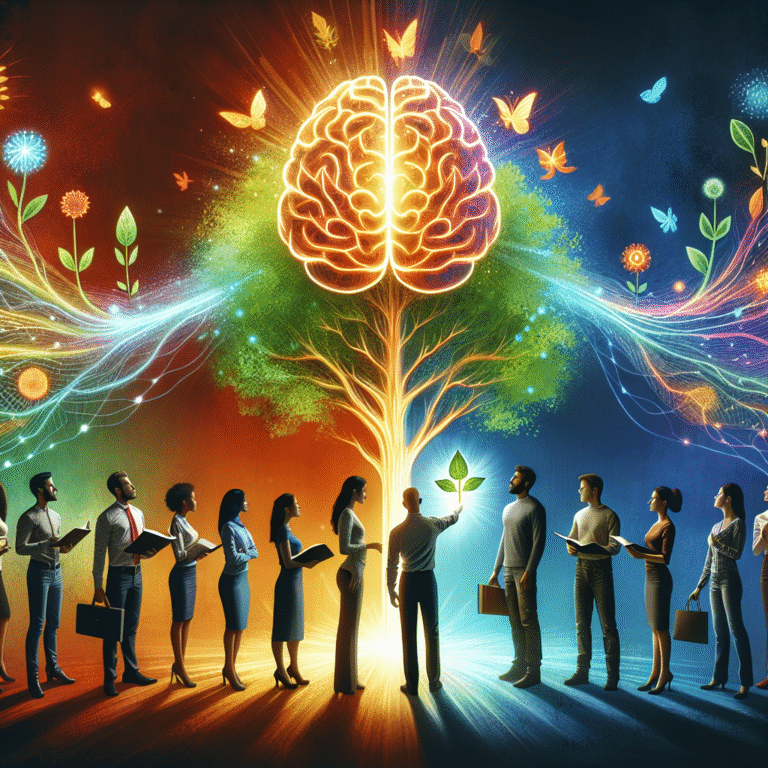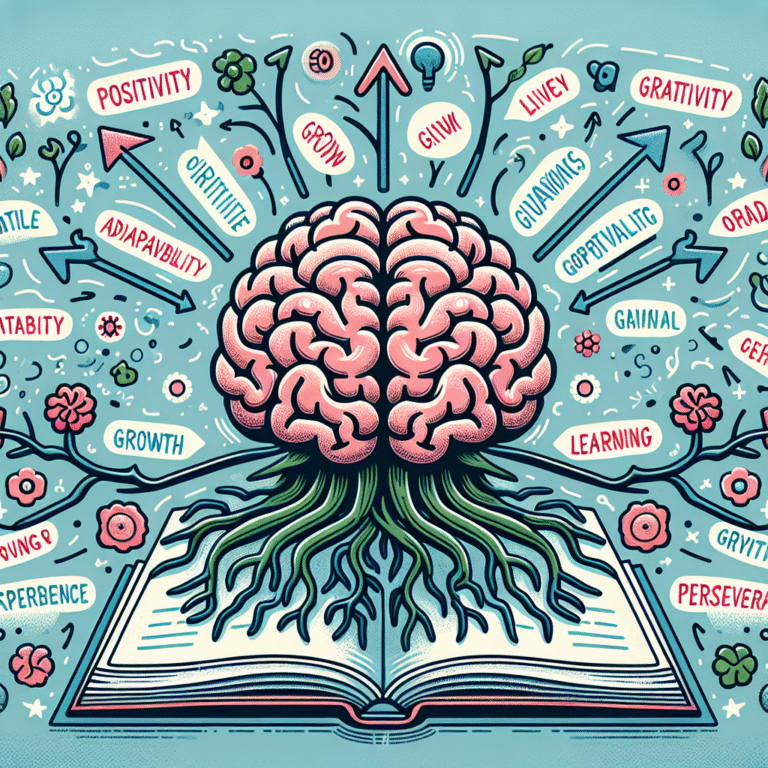
In a world that constantly demands growth and adaptation, the concept of a fixed mindset can entrap even the most talented individuals. This limitation not only stunts personal and professional development but can also lead to missed opportunities and unfulfilled potential. Understanding how to recognize the signs of a fixed mindset and finding pathways to a growth mindset is essential for anyone who wants to thrive in today’s dynamic environment. This article, The Fixed Mindset Trap: Recognizing the Signs and Finding Your Way Out, will delve deep into these concepts, offering insights, practical strategies, and encouraging narratives to help you break free.
Introduction: The Mindset Divide
Have you ever felt stuck, unable to progress despite your best efforts? Perhaps you thought, “This is just who I am,” or “I’ll never be good at this.” These thoughts may originate from a fixed mindset—a belief that your abilities and intelligence are static traits. In contrast, a growth mindset sees potential for development and change through effort. By recognizing The Fixed Mindset Trap: Recognizing the Signs and Finding Your Way Out, you take the first step toward a more fulfilling and successful life.
Understanding Fixed vs. Growth Mindset
What is a Fixed Mindset?
A fixed mindset, popularized by psychologist Carol Dweck, is the belief that your skills and intelligence are limited and cannot change significantly. This belief leads to various behaviors and attitudes that can hinder success.
Characteristics of a Fixed Mindset:
- Avoidance of Challenges: Individuals may shy away from difficult tasks, preferring to stick to what they know.
- Fear of Failure: The fear of making mistakes can lead to paralysis and inaction.
- Need for Validation: Fixed mindset individuals often seek approval and validation from others, relying heavily on external feedback.
- Stagnation: Without a willingness to learn or grow, progress becomes stunted.
What is a Growth Mindset?
Conversely, a growth mindset is the belief that abilities can be developed through dedication and hard work. This mindset fosters resilience and encourages individuals to embrace challenges as opportunities for growth.
Characteristics of a Growth Mindset:
- Embracing Challenges: Individuals are more likely to take on challenges, seeing them as pathways to growth.
- Learning from Criticism: Constructive feedback is viewed as a valuable tool for improvement.
- Persistence: There is a commitment to continuous effort, recognizing that setbacks are part of the learning process.
Recognizing the Signs of a Fixed Mindset
1. Self-Talk and Inner Dialogue
The first step in recognizing a fixed mindset often lies in self-talk. Phrases like “I can’t” or “I’m just not good at this” are clear indicators of a fixed mindset. Instead, a shift toward “I can learn” significantly changes the conversation.
Example:
| Fixed Mindset Self-Talk | Growth Mindset Self-Talk |
|---|---|
| I can’t do this. | I can learn how to do this. |
| Failure means I’m not good enough. | Failure is a learning opportunity. |
2. Reactions to Setbacks
How do you respond when things don’t go your way? Do you throw in the towel or dig deeper? A fixed mindset often leads to giving up when faced with difficulties, while a growth mindset provokes resilience.
Case Study: Sarah’s Journey
Sarah, a talented software engineer, initially approached challenges with a fixed mindset. When her first app received poor reviews, she considered it a reflection of her capabilities and decided to abandon app development entirely. After attending a workshop about growth mindset, she learned to view feedback as constructive. She proactively sought out mentorship and improved her skills, leading her to develop a successful app two years later.
3. Seeking Out Comfort Zones
Those with a fixed mindset often remain entrenched in their comfort zones, hesitating to explore new opportunities or learn new skills. Recognizing this behavior is crucial to escaping the fixed mindset trap.
Analysis:
Sarah’s story illustrates how avoiding discomfort can impede progress. By embracing challenges, individuals can unlock doors to new possibilities.
Strategies for Breaking the Fixed Mindset Trap
1. Challenge Negative Self-Talk
Transforming your inner dialogue is essential for overcoming a fixed mindset. Start by identifying negative thoughts and rephrasing them into positive, growth-oriented statements. This practice can begin shifting your mindset almost immediately.
2. Embrace Lifelong Learning
Cultivating a growth mindset involves an ongoing commitment to learning. This means seeking out new experiences, enrolling in courses, or engaging in workshops. Lifelong learners are better positioned to tackle future challenges.
3. Set Achievable Goals
Goal setting can help redirect your focus from avoidance to accomplishment. Break large goals into smaller, manageable tasks that allow for steady progress and celebrate these achievements to bolster your confidence.
4. Surround Yourself with Growth-Minded People
Engaging with individuals who embody a growth mindset can have a profound impact on your own mindset. Join networking communities or group settings where growth and improvement are prioritized.
5. Reflect Regularly
Take time to reflect on your experiences and mindset shifts. Journaling can serve as a powerful tool to document your journey, monitor your growth, and identify areas requiring further attention.
Frequently Asked Questions
1. What are the long-term effects of a fixed mindset?
A fixed mindset can lead to stagnation, decreased motivation, and missed opportunities, ultimately affecting personal and professional outcomes negatively.
2. How can I cultivate a growth mindset in my workplace?
Encouraging a culture of feedback, celebrating failures as learning experiences, and providing opportunities for continuous professional development can foster a growth mindset among employees.
3. Are there any books or resources on growth mindset?
Yes! Carol Dweck’s book "Mindset: The New Psychology of Success" is a foundational resource. Other recommendations include "Grit: The Power of Passion and Perseverance" by Angela Duckworth and "Atomic Habits" by James Clear.
4. Can a fixed mindset be changed?
Absolutely! With conscious effort, self-reflection, and a commitment to learning, it’s possible to shift from a fixed mindset to a growth mindset over time.
5. How can I monitor my mindset progress?
Keeping a journal, seeking mindset coaching, or participating in workshops can provide insights into your mindset evolution and help track your journey.
Conclusion: Your Path to Growth
The journey from The Fixed Mindset Trap: Recognizing the Signs and Finding Your Way Out is not only transformative but a gateway to personal and professional fulfillment. By embracing challenges, learning from failures, and maintaining a growth-oriented approach, you can break free from the constraints of a fixed mindset.
Ultimately, the key to success lies in your mindset. With conscious effort and a willingness to adapt, you can cultivate resilience, unlock your true potential, and navigate the challenges of life with newfound confidence and capability. So take the leap, recognize the signs, and find your way out!
This structured approach not only engages readers but also provides them with actionable strategies and insights to foster a growth mindset. The use of real-life examples and clear distinctions between fixed and growth mindsets enhances understanding and relatability.















